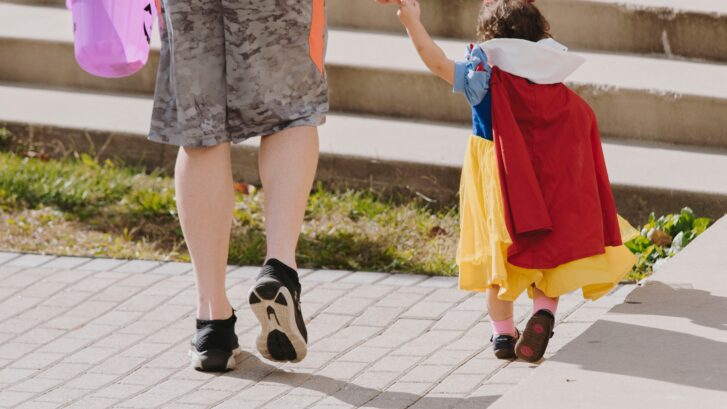Is Trick-or-Treating Safe This Year?
From a small Celtic festival in the British isles around 2,000 years ago, Halloween has morphed into an annual tradition of costumes, parties, haunted houses, and, above all, door-to-door trick-or-treating. According to a recent Harris Poll, 80 percent of those surveyed said handing out treats on Halloween is their favorite way to celebrate the holiday.
Because Halloween has become such a huge fall celebration, our concierge doctors want to provide the best information on Halloween safety and whether you should let the little ones partake this year.
A risky business
Knowing they’ll rain on everyone’s parade, the Centers for Disease Control and Prevention (CDC) nevertheless suggests people find another way to celebrate Halloween.
“Many traditional Halloween activities can be high-risk for spreading viruses,” the CDC says. “There are several safer ways to participate in Halloween.”
While children represent only 10.6 percent of COVID-19 cases to date, the American Academy of Pediatrics (AAP) reports, as of October 1, over 657,000 children have tested positive since the onset of the pandemic, and more than 100 have died. Now that schools across the nation have largely reopened, in part or in full, that number is likely to increase dramatically.
And even though children are at relatively low risk of dying from COVID-19, they can still spread the disease to at-risk adults in their household.
So what should you do to celebrate Halloween safely?
The CDC has broken down traditional activities into lower-, moderate-, and higher-risk activities as follows.
Lower risk
- Carve/decorate and display pumpkins with members of your household
- Carve or decorate pumpkins outside, at a safe distance, with neighbors or friends
- Decorate your house, apartment, or living space
- Participate in a Halloween scavenger hunt. Give kids lists of Halloween-themed things to look for while they walk outdoors from house to house admiring Halloween decorations at a distance
- Have a virtual Halloween costume contest
- Hold a Halloween movie night with people you live with
- Have a scavenger hunt-style search with your household members in or around your home, rather than going house to house
Moderate risk
- Participate in one-way trick-or-treating. Line up individually-wrapped goodie bags for families to grab-and-go while continuing to social distance (such as at the end of a driveway or at the edge of a yard).
- If you are preparing goodie bags, wash your hands with soap and water for at least 20 seconds before and after preparing bags
- Have a small group, outdoor, open-air costume parade where people are distanced more than six feet apart
- Attend a costume party held outdoors where protective masks are used and people can remain more than six feet apart
- Go to an open-air, one-way, walk-through haunted forest where appropriate mask use and social distancing is enforced.
- If screaming will likely occur, greater distancing is advised. The greater the distance, the lower the risk of spreading a respiratory virus.
- Visit pumpkin patches or orchards
- Use hand sanitizer before touching pumpkins or picking apples, wear masks, and maintain social distancing
- Hold an outdoor Halloween movie night with local family friends, with people spaced at least six feet apart.
Higher risk
- Participate in traditional trick-or-treating where treats are handed to children who go door to door
- Hold “trunk”-or-treat where treats are handed out from trunks of cars lined up in large parking lots
- Attend crowded costume parties held indoors
- Go to an indoor haunted house where people may be crowded together and screaming
- Go on hayrides or tractor rides with people who are not in your household
- Use alcohol or drugs, which can cloud judgment and increase risky behaviors
- Travel to a rural fall festival that is not in your community if you live in an area with community spread of COVID-19.
The CDC recommends avoiding all these higher-risk activities.
In addition, it cautions that a costume mask is not a substitute for a cloth or disposable mask. Any costume mask should not be used unless it is made of two or more layers of breathable fabric. It must cover the mouth and nose and doesn’t leave gaps around the face.
Finally, it warns that people not wear a costume mask over a protective cloth mask. This can be dangerous if the costume mask makes it difficult to breathe. Consider using a Halloween-themed cloth mask, instead.
If you have questions about Halloween safety or the safety of any activity, please let us help you evaluate your and your family’s risk.

